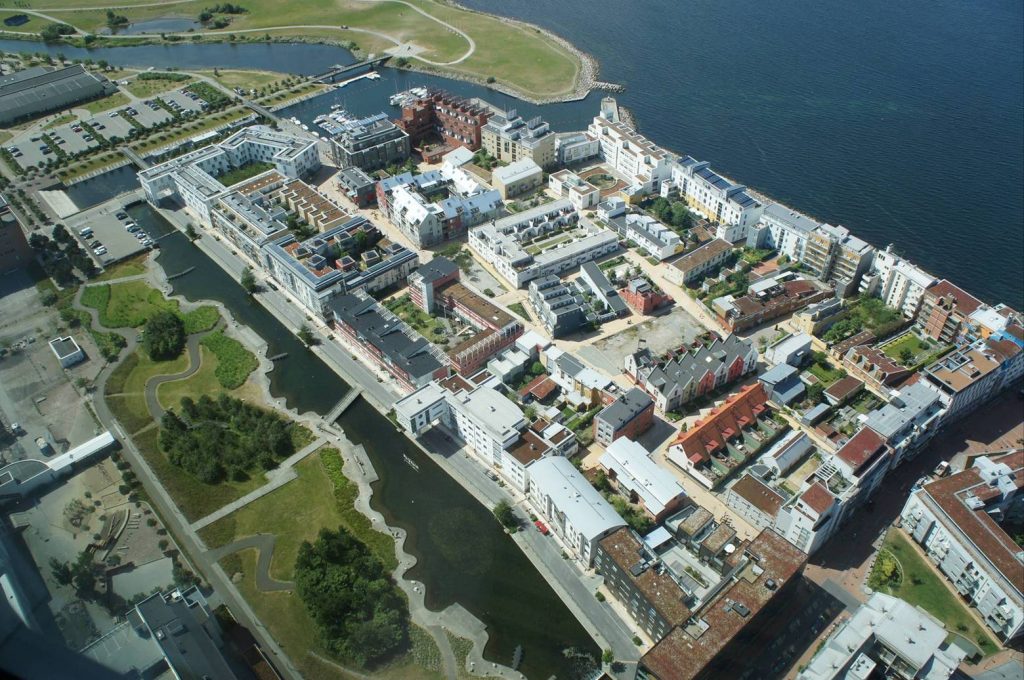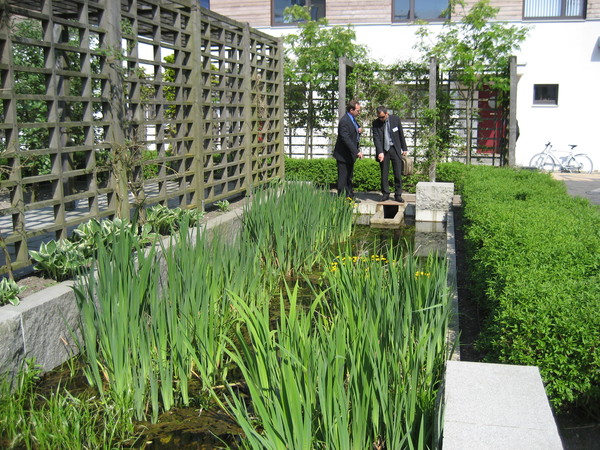
Bo01 is part of the residential district Västra Hamnen in Malmö. It started as a housing exposition project ‘city of tomorrow’. A team led by urban designer Klas Tham planned a high density residential area with state of the art environmental measurements regarding energy, water and ecology. Despite the densely built-up urban character, much attention was paid to the diversity of green spaces and to biodiversity. During the development, two methods were used to turn Bo01 into a green neighbourhood: the ‘green points system’ and the ‘greenspace factor’. The basis for the green points system was a long-list of measures from which developers had to choose ten to use in the future inner courts. The greenspace factor was developed on the basis of experiences in Berlin in the 1990s. This factor describes the ecological value of a lot as an average of the qualities of its parts. Depending on whether the part-lot provides room for green, ecological measures and rainwater management, it is given a value between 0.0 and 1.0. The rule was that each plot as a whole had to score an average of at least 0.5. Most developers and architects were enthusiastic about these clear guidelines. It enabled them to discuss sustainability with the future residents. Some ecologists and landscape architects were less enthusiastic because the greenspace factor left out certain aspects, did not count spontaneous interventions and was in danger of losing sight of the big picture. They thought this approach would not result in a coherent system. Experiences so far have shown these fears to be largely unfounded. The Anchor Park is situated in the lee of Bo01. The park is not only designed as a rainwater buffer but also a place to learn about nature. Thus, it is furnished with three typical Swedish biotopes; an alder swamp, oak forest and saltwater habitat.
-Malmö (SE) from 2001
-Klas Tham, Municipality of Malmö
more info: Green factor
